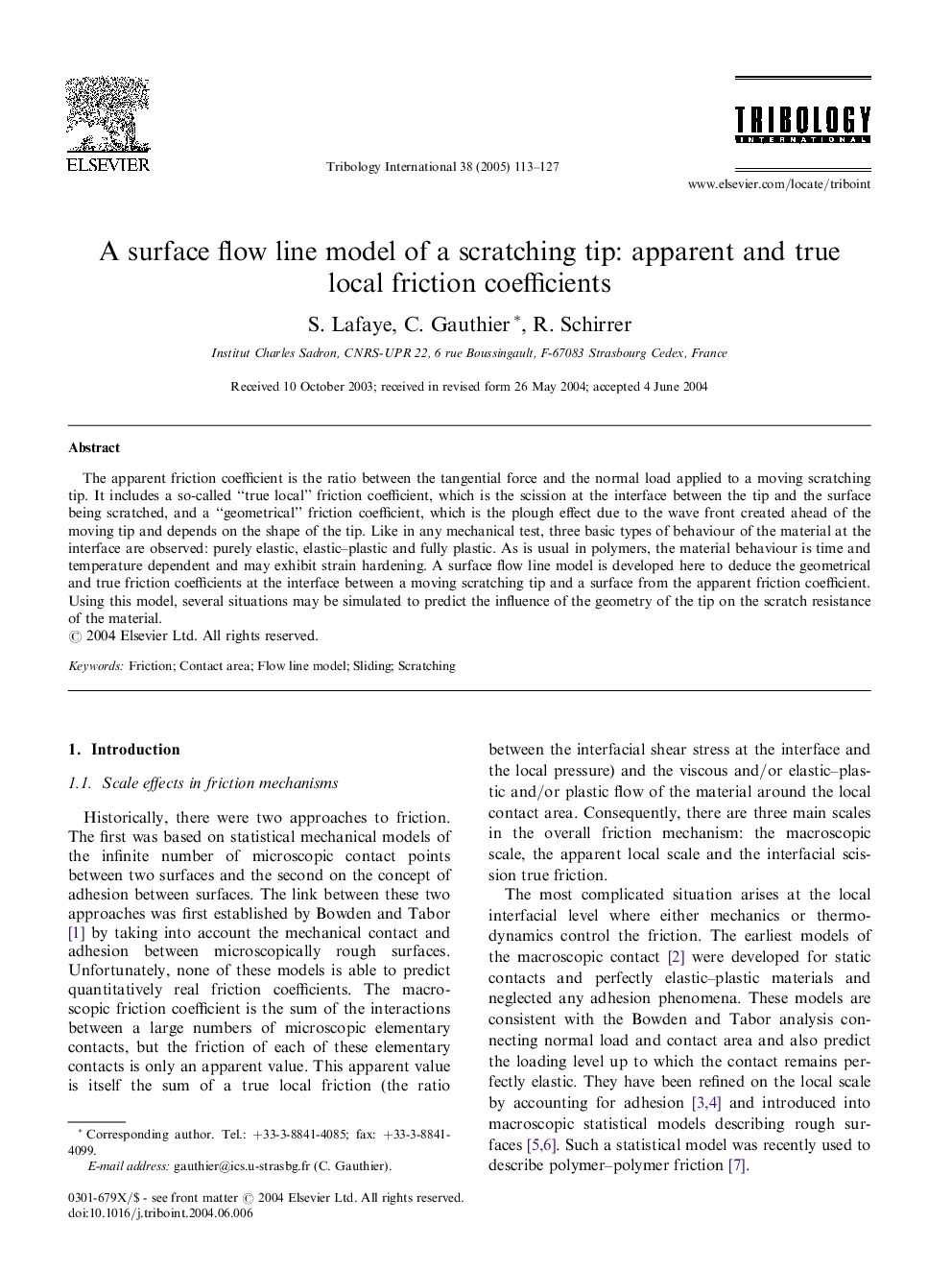| Article ID | Journal | Published Year | Pages | File Type |
|---|---|---|---|---|
| 10384640 | Tribology International | 2005 | 15 Pages |
Abstract
The apparent friction coefficient is the ratio between the tangential force and the normal load applied to a moving scratching tip. It includes a so-called “true local” friction coefficient, which is the scission at the interface between the tip and the surface being scratched, and a “geometrical” friction coefficient, which is the plough effect due to the wave front created ahead of the moving tip and depends on the shape of the tip. Like in any mechanical test, three basic types of behaviour of the material at the interface are observed: purely elastic, elastic-plastic and fully plastic. As is usual in polymers, the material behaviour is time and temperature dependent and may exhibit strain hardening. A surface flow line model is developed here to deduce the geometrical and true friction coefficients at the interface between a moving scratching tip and a surface from the apparent friction coefficient. Using this model, several situations may be simulated to predict the influence of the geometry of the tip on the scratch resistance of the material.
Related Topics
Physical Sciences and Engineering
Chemical Engineering
Colloid and Surface Chemistry
Authors
S. Lafaye, C. Gauthier, R. Schirrer,
